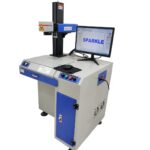Teflon, a name synonymous with non-stick, has become a household staple. But what exactly is Teflon coating, and how does it work its magic? This article delves into the science behind this slippery superstar, exploring its properties, applications, and the considerations surrounding its use.

What is Teflon, Really?
Teflon is the brand name for polytetrafluoroethylene (PTFE), a synthetic fluoropolymer. Imagine a long chain of carbon atoms, each one tightly bonded to two fluorine atoms. This unique molecular structure gives PTFE its remarkable properties: it’s incredibly slippery, highly resistant to heat and chemicals, and virtually non-reactive.
| Feature | Description | Advantages | Disadvantages | Applications |
| Material | Polytetrafluoroethylene (PTFE), a synthetic fluoropolymer. | |||
| Process | Surface preparation (cleaning, priming), Teflon application (spraying, dipping), curing (heating). | |||
| Key Properties | Non-stick, low friction, heat resistant, chemical resistant, water repellent, excellent electrical insulator. | |||
| Non-Stick Mechanism | Extremely low surface energy due to fluorine atoms, repels most substances. | Easy cooking and cleaning. | Can degrade at high temperatures. | Non-stick cookware. |
| Low Friction | Reduces wear and tear. | Extends lifespan of parts, improves efficiency. | Industrial coatings, machinery. | |
| Heat Resistance | Can withstand high temperatures. | Overheating can release fumes. | Aerospace, high-temperature applications. | |
| Chemical Resistance | Resists damage from many chemicals. | Industrial coatings, chemical processing. | ||
| Water Repellency | Repels water and other liquids. | Fabric protection. | ||
| Electrical Insulation | Excellent insulator. | Cables, electrical components. | ||
| Biocompatibility | Non-reactive nature. | Medical devices. | ||
| Typical Applications | Non-stick cookware, industrial coatings, aerospace, medical devices, fabric protection, electrical insulation. | |||
| Health Considerations | PFOA (used in manufacturing) phased out; current coatings considered safe for normal use. Avoid overheating. | |||
| Care Instructions | Use non-metal utensils, clean with warm soapy water and a soft sponge. Avoid abrasive cleaners. | Extends lifespan of coating. | Susceptible to scratching. | |
| Lifespan | Limited; non-stick properties can wear down over time. | |||
| Future Trends | Research focused on enhancing durability, improving performance, and ensuring environmental safety. |
How Does Teflon Coating Work?
Teflon coating isn’t simply spraying Teflon onto a surface. It’s a more involved process. First, the surface to be coated, typically metal, is prepped to ensure proper adhesion. This might involve cleaning, roughening, or applying a primer. Then, the Teflon, usually in a liquid form, is applied, often through spraying or dipping. The coated object is then heated to cure the Teflon, creating a durable, non-stick layer. This heat treatment allows the Teflon particles to fuse together and bond to the underlying surface.

The Magic of Non-Stick
Teflon’s non-stick nature comes from its extremely low surface energy. Essentially, other substances have a hard time sticking to it. This is because the fluorine atoms in PTFE create a very smooth, non-polar surface that repels most other materials. Think of it like trying to stick tape to a wet surface – it just won’t adhere well. Similarly, food doesn’t stick to a Teflon-coated pan.
Beyond the Kitchen: A Wide Range of Applications
While Teflon’s most famous use is in non-stick cookware, its unique properties have made it invaluable in a variety of other applications:
- Industrial Coatings: Teflon coatings are used in industrial settings to reduce friction, prevent corrosion, and provide chemical resistance in machinery and equipment. This can extend the lifespan of parts and improve efficiency.
- Aerospace: Teflon’s resistance to extreme temperatures and chemicals makes it useful in aerospace applications, such as sealing and insulating components.
- Medical Devices: Teflon’s biocompatibility and non-reactive nature make it suitable for use in certain medical devices and implants.
- Fabric Protection: Teflon coatings are sometimes applied to fabrics to make them water and stain resistant.
- Electrical Insulation: Teflon is an excellent electrical insulator, used in cables and other electrical components.
Teflon and Health: Addressing the Concerns
For many years, a chemical called perfluorooctanoic acid (PFOA), used in the manufacturing of Teflon, raised health concerns. However, most manufacturers have now phased out the use of PFOA. Current Teflon coatings are considered safe for normal use. It’s important to note that overheating Teflon cookware can release fumes, so it’s always best to cook at moderate temperatures.
Advantages of Teflon Coating
- Non-Stick: Food doesn’t stick, making cooking and cleaning easier.
- Low Friction: Reduces wear and tear in mechanical applications.
- Heat Resistant: Can withstand high temperatures (though excessive heat should be avoided).
- Chemical Resistant: Resists damage from many chemicals.
- Water Repellent: Repels water and other liquids in certain applications.
Disadvantages of Teflon Coating
- Susceptible to Scratching: Sharp objects can damage the coating.
- Can Degrade at High Temperatures: Overheating can release fumes.
- Limited Lifespan: The non-stick properties can wear down over time.
Caring for Teflon Coatings
To maximize the lifespan of Teflon-coated products, it’s important to use appropriate care. Avoid using metal utensils on non-stick cookware. Instead, opt for wooden, silicone, or plastic utensils. Clean Teflon-coated surfaces with warm, soapy water and a soft sponge or cloth. Avoid using abrasive cleaners or scouring pads.
The Future of Teflon
Researchers are continuously exploring new applications and improved formulations for Teflon coatings. The focus is on enhancing durability, improving performance, and ensuring environmental safety. As technology advances, we can expect to see even more innovative uses for this remarkable material.
In conclusion, Teflon coating, thanks to its unique properties, has become an indispensable material in a wide range of industries. From non-stick cookware to advanced industrial applications, Teflon’s versatility and performance continue to make it a popular choice. By understanding its properties, applications, and proper care, we can appreciate the science behind this slippery marvel and make the most of its many benefits.




